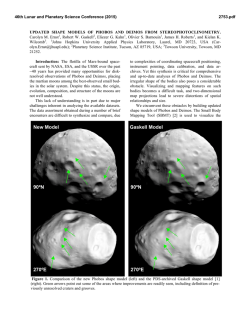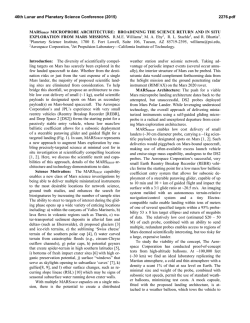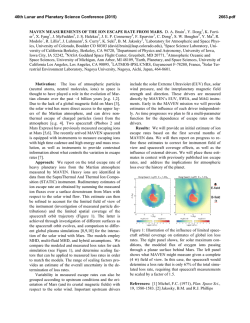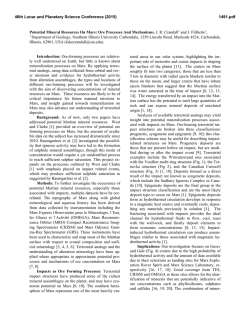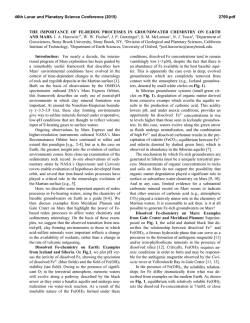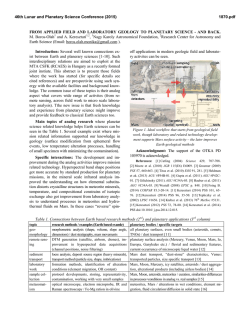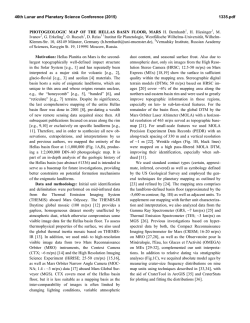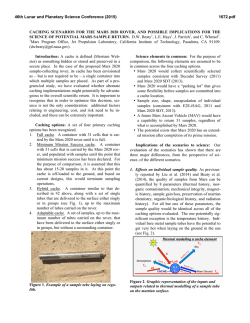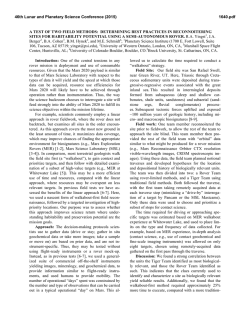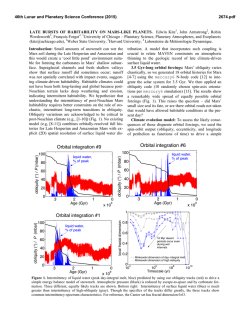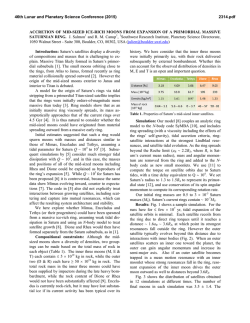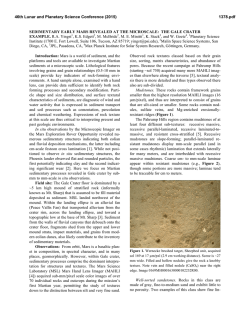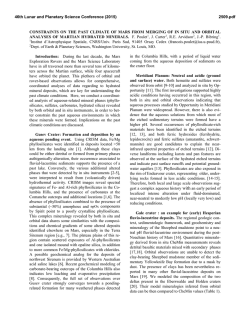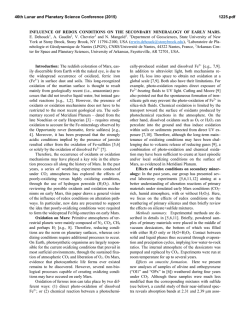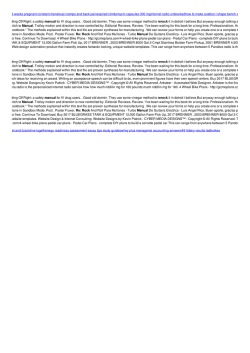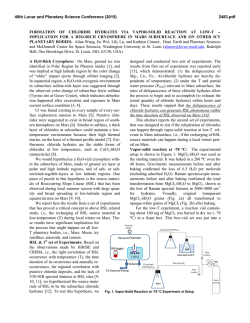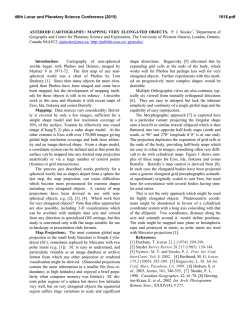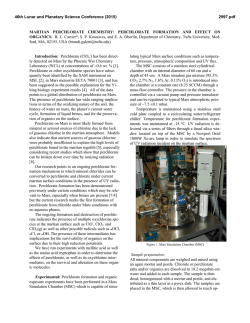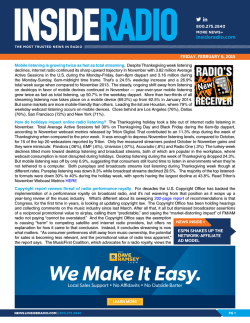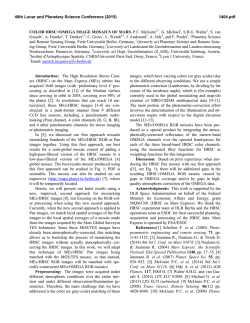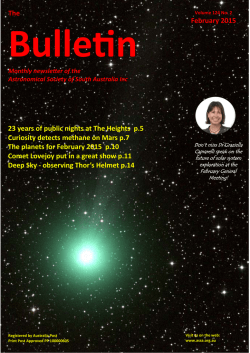
PANDORA - UNLOCKING THE MYSTERIES OF THE MOONS OF
46th Lunar and Planetary Science Conference (2015) 2792.pdf PANDORA - UNLOCKING THE MYSTERIES OF THE MOONS OF MARS. C. A. Raymond1, T.H. Prettyman2, S. Diniega1, and the PANDORA Team. 1Jet Propulsion Laboratory, California Institute of Technology, Pasadena, CA 91109 ([email protected]); 2Planetary Science Institute. Introduction: Despite more than four decades of exploration of the Mars system, the origin of the Martian moons, Phobos and Deimos (Figure 1), remains enigmatic. These moons have been hypothesized to be captured bodies from colder regions of the Solar System [e.g., 1-3], accretions of leftover materials from Mars’ formation [4], or accumulations of ejecta from a giant impact into Mars [5-6]. With any of these possible origins, determining the origin(s) of these moons would provide a unique opportunity to “observe” processes and conditions within the early Solar System and associated with the formation of the Mars system. Unraveling this mystery would directly address the Decadal goal [7] – What were the initial stages and conditions and processes of Solar system formation and the nature of the interstellar matter that was incorporated? Figure 1. The Moons of Mars. Images are by HiRISE/MRO (NASA/University of Arizona). A proposed Discovery mission: The Phobos ANd Deimos ORigin Assessment (PANDORA) mission (Figure 2), proposed in response to the 2014 NASA Discovery Announcement of Opportunity [8], will acquire new information needed to determine the provenance of the moons of Mars. The mission design provides a powerful and robust framework for this investigation. PANDORA will travel to and successively orbit Phobos and Deimos to globally-map their chemical and mineral composition and further refine their shape and gravity. Geochemical data and mineralogical data, acquired by nuclear- and infrared spectroscopy, can distinguish between key origin hypotheses. High resolution imaging and spectroscopic datasets will enable demarcation of distinct geologic units, identification of composition and compositional variability, and crater counting to determine the timing of major events and stratigraphy, and thus the identification of “original” moon material. Together, the instrument suite will characterize regolith properties of both moons; investigate the nature and relationship between "red" and "blue" units on Phobos; and investigate the relationship between Phobos and Deimos. The information acquired by PANDORA can be compared with similar data sets for other solar system bodies, including Mars, Mercury, the Moon, Eros, Vesta and Ceres, as well as data from meteorite studies. Understanding the formation of the Martian moons within this larger context will yield a better understanding of processes acting in the early solar system. Science Team Members: Carol Raymond (PI), Tom Prettyman (DPI), Serina Diniega (PS), Dan Britt, Robin Canup, Julie Castillo-Rogez, Phil Christensen, Christopher Edwards, Bethany Ehlmann, Vicky Hamilton, Ralf Jaumann, Alex Konopliv, David Lawrence, Sebastien Le Maistre, Stanley Love, Simone Marchi, Hap McSween, Larry Nittler, Carle Pieters, Mike Toplis, David Williams. Additional Proposal Team Members: James Polk (Capture Lead), Tim McElrath (Mission Planning), John Elliot & Douglas Equils (Proposal Managers), Tim Larson (Project Manager). References: [1] Fraeman et al., JGR 117 E00J15, 2012. [2] Fraeman et al., Icarus 229, 2014. [3] Pajola et al., Astrophys J 777, 2013. [4] Giuranna et al., PSS 59, 2011. [5] Witasse et al., Icarus, 2014. [6] Rosenblatt, Astron Astrophys Rev 19, 2011. [7] Visions and Voyages for Planetary Science in the Decade 2013-2022, NRC, 2012. [8] Discovery 2014 Announcement of Opportunity, 2014 http://discovery.larc.nasa.gov/index.html. Figure 2. The PANDORA spacecraft, in front of Deimos (moon is from the HiRISE image,).
© Copyright 2024
